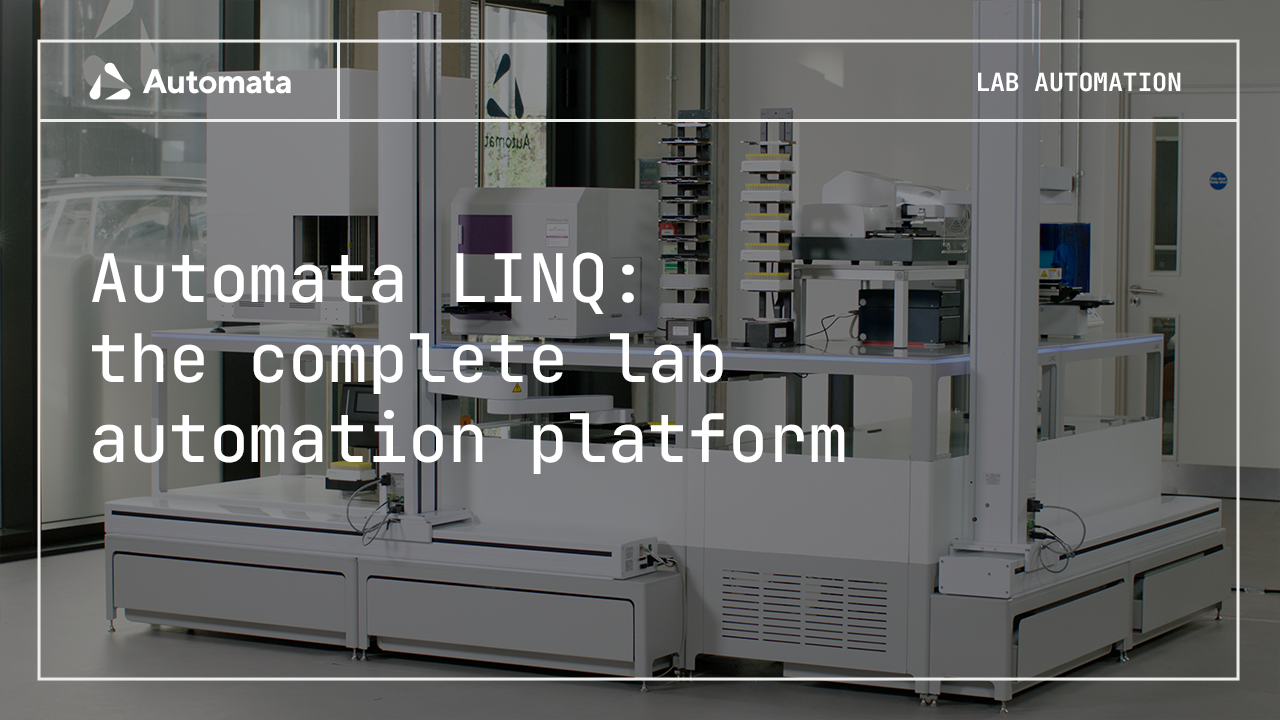Improving traceability with lab automation

Ensuring traceability is critical to maintaining data integrity, regulatory compliance, and experimental reproducibility in laboratories. This article delves into the concept of traceability in laboratories, exploring its significance, the challenges faced in achieving it, and effective strategies for improving lab traceability. Finally, we will examine how modern technologies, particularly lab automation solutions, can revolutionise practices to improve traceability.
What does traceability mean in a laboratory?
Traceability in the laboratory refers to the ability to track and document every step of a process or sample lifecycle, including the history, location, and use of samples, reagents, equipment, and data. This ensures that all results can be reliably traced back to their origin, enhancing data integrity, reproducibility, and compliance with regulations1.
Why is traceability important in the lab?
Ensuring traceability in labs is extremely important for several reasons, and for many labs, it is required by regulatory guidelines. The primary purposes of traceability are:
- Data accuracy and reliability
Quality control to ensure data is accurate and reliable is essential not only for data integrity but also for improving patient safety, particularly in clinical laboratories or drug discovery settings where laboratory processes directly impact patient care2 - Reproducibility
Traceability facilitates result comparability and reproducibility across different laboratories and methods. This is especially important in long-term and multi-centre studies, particularly so amid the current reproducibility crisis, in which over 70% of scientists cannot reproduce other scientists’ experiments, and over 50% have failed to reproduce their own work3 - Regulatory requirements
Traceability is essential for complying with regulatory requirements when working with human samples or in other regulated settings, as well as for achieving and maintaining laboratory accreditation4,5
Challenges in achieving traceability in labs
Despite its importance, achieving traceability in laboratories presents several key challenges:
- Lack of laboratory process standardisation
There is a significant lack of standardisation in laboratory processes, leading to frequent experimental modifications, process variations between operators, and protocol updates that often go undocumented6 - Inadequate calibration and monitoring
Measurement device calibration is only valid for short periods, yet calibrations are often not done frequently enough. Moreover, some manual steps in the sample or data lifecycle are frequently not monitored closely enough - Manual error
Human errors in recording or transcribing data can compromise the integrity of the data trail - Data loss
Data is typically spread across multiple disconnected instruments, software, and data repositories, often with incompatible data formats, making it challenging to consolidate data and achieve a complete audit trail - Cost barriers
Implementing traceability systems to replace existing systems is complex and costly, making it inaccessible to many laboratories
How to improve and maintain traceability in the lab
Standard operating procedures
Developing detailed standard operating procedures (SOPs) for all lab processes, including sample handling, data recording, equipment use, and reagent preparation, can help improve standardisation and make tracing results back to the source easier8.
Centralised systems
Implementing a centralised laboratory information management system (LIMS) that combines different stages of research supports automated data capture, storage, and retrieval, ensuring accurate documentation of every step in the workflow9. Such a system can be integrated with other systems, including cloud-first automation platforms, to streamline the process further.
Barcode systems
Using barcode systems eliminates the risk of human error and improves accuracy in sample labelling. Barcode labels also allow for quick and precise identification and tracking throughout the sample’s lifecycle, reducing the risk of misidentification or loss10.
Automation
Lab automation enhances traceability in the laboratory by accurately capturing data directly from instruments, minimising human error, and ensuring consistent documentation of all processes, creating a single source of truth. By reducing manual handling, automation improves process standardisation, decreases the risk of errors like mislabelling or cross-contamination, and supports compliance with regulatory standards by maintaining detailed, secure, and readily accessible records11.
Improve traceability (and more) in your lab with LINQ
Automata’s LINQ platform significantly enhances laboratory traceability by standardising processes, enhancing reproducibility and leaving little room for error while automating real-time data and metadata capture.
The LINQ Cloud software provides a centralised, cloud-based data management system. This comprehensive approach creates a central source of truth, minimising human error and ensuring consistent workflow application.
LINQ Cloud’s robust audit trail capabilities, combined with permissions-based access control, improve data integrity and transparency while streamlining processes for enhanced productivity.
By seamlessly integrating physical and digital lab environments, the complete LINQ platform streamlines data traceability, boosts reproducibility, and facilitates regulatory compliance.
To learn more about how the LINQ platform can help you achieve full traceability in your lab processes, get in touch today!

References
1. Tripathi NK, Shrivastava A. Chapter 4 – Scale up of biopharmaceuticals production. In: Grumezescu AM, ed. Nanoscale Fabrication, Optimization, Scale-Up and Biological Aspects of Pharmaceutical Nanotechnology. William Andrew Publishing; 2018:133-172. doi:10.1016/B978-0-12-813629-4.00004-8
2. Muller FL, Latimer JM. Anticipation of scale up issues in pharmaceutical development. Comput Chem Eng. 2009;33(5):1051-1055. doi:10.1016/j.compchemeng.2008.09.015
3. Monoclonal Antibodies NRC (US) C on M of P. Large-Scale Production of Monoclonal Antibodies. In: Monoclonal Antibody Production. National Academies Press (US); 1999. Accessed August 29, 2024. https://www.ncbi.nlm.nih.gov/books/NBK100189/
4. Gimenez L, Simonet C, Malphettes L. Scale-up considerations for monoclonal antibody production process: an oxygen transfer flux approach. BMC Proc. 2013;7(S6):P49, 1753-6561-7-S6-P49. doi:10.1186/1753-6561-7-S6-P49
5. Jang EH, Park YS, Kim MS, Choi DH. Model-Based Scale-up Methodologies for Pharmaceutical Granulation. Pharmaceutics. 2020;12(5). doi:10.3390/pharmaceutics12050453
6. Algorri M, Abernathy MJ, Cauchon NS, Christian TR, Lamm CF, Moore CMV. Re-Envisioning Pharmaceutical Manufacturing: Increasing Agility for Global Patient Access. J Pharm Sci. 2022;111(3):593-607. doi:10.1016/j.xphs.2021.08.032
7. Singh R. Chapter 17 – Automation of continuous pharmaceutical manufacturing process. In: Singh R, Yuan Z, eds. Computer Aided Chemical Engineering. Vol 41. Process Systems Engineering for Pharmaceutical Manufacturing. Elsevier; 2018:431-446. doi:10.1016/B978-0-444-63963-9.00017-8
8. Holland I, Davies JA. Automation in the Life Science Research Laboratory. Front Bioeng Biotechnol. 2020;8:571777. doi:10.3389/fbioe.2020.571777

